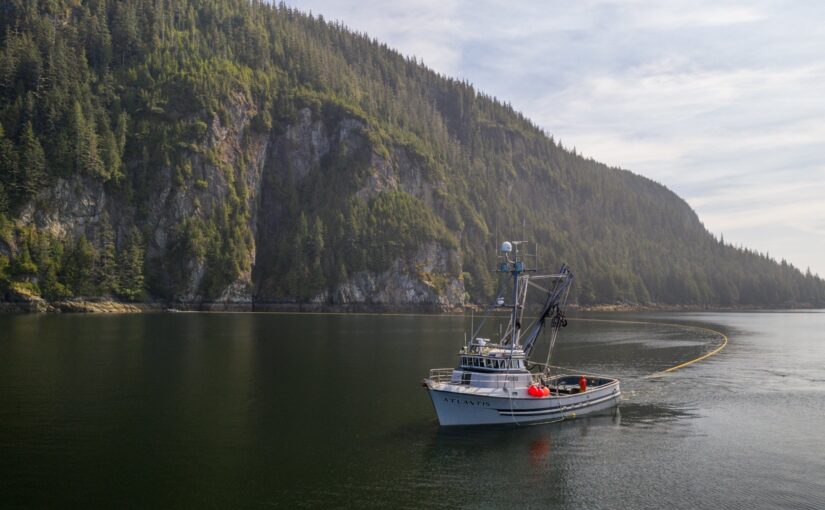Why does Seafood have Seasons?
“There are plenty of fish in the sea” is what they say, but if that’s true, why do people eat only a handful of different species? While a world of delicacies lies in the ocean, much of the western world limits itself to a few widely consumed species. Recently, the efficiency of modern fishing techniques has allowed us to ignore the cycle in which fish spawn, grow, and develop. Because of this, highly seasonal and eagerly awaited seafood can be harvested throughout the year.
Seafood seasonality is not dependant on climatic seasons. Instead, it is the time when fish are at peak harvest and most abundant. Unless you are directly involved in the fishing industry or live in a coastal community, you probably are not too familiar with this. However, the seasonality of fish has a direct impact on its sustainability. For example, if fish are being harvested during the spawning season, stocks could diminish. By purchasing out-of-season fish, not only are you negatively impacting fish stocks. But you are more likely buying from distant sources, raising the ‘true cost’ of your dinner with unnecessary transport. Aside from environmental impact, out-of-season fish doesn’t have nearly the quality of fresh local fish.
While the concept is related, local fishing seasons do not always reflect how fish should be harvested. These are the seasons determined and imposed by local governments that say when fisherfolk are allowed to fish for certain fish. Local governments in coastal areas sometimes try to expand fishing seasons to help fisherfolk get a better harvest. These guidelines are not necessarily beneficial to the consumer unless you have a direct stake in the market.
How can consumers even begin to choose seafood that’s in season? It’s certainly something you won’t find on the label. The answer can vary by location and the kind of seafood in question. Some wild fish, like salmon, come mainly from one area of the world, giving it one primary season. Other fish, like tuna, offer so much variety in terms of location and species that the season is highly variable. Let’s take a look at some popular seafood to determine their peak seasons.
What’s in season now
Wild Alaskan Salmon
You’re in luck if you live on the West Coast because wild Alaskan salmon is in season during the late spring and summer months. Wild Alaskan salmon includes many types of salmon, such as pink, coho, sockeye, chum, and king (also known as Chinook). If you’re looking to add a bit of salmon to your diet, you can throw it on the barbecue and make cedar plank salmon at your next barbecue.
Yellowtail Snapper
For those on the opposite side of the continent, don’t miss out on yellowtail snapper season. Yellowtail snapper is commonly enjoyed during the summer. Its light, flaky meat goes well with vegetable side dishes and a glass of refreshing white wine. This fish has a protracted spawning season, making it a viable food source through spring and summer, and early September.
Striped Bass
Striped bass, also known as rockfish, is a responsible seafood choice for consumers across America. Although wild striped bass is native to the Atlantic coast, state game, and fishing commissions. Introduced this fish species to the Pacific Ocean and various large reservoirs across America to ensure it was available seasonally to everyone.
Fresh Tilapia
Tilapia is a responsible choice throughout the spring and summer, whether you live on the East Coast, the West Coast, or anywhere in between. Most fresh Tilapia come from Mexico and Honduras, where they are raised in deep, freshwater lakes using large floating pens. Since fresh Tilapia is responsibly farmed, there’s no risk of overfishing. Leading Tilapia producers like Regal Springs make sure that fish is always healthy and nutritious. One of the best things about Fresh Tilapia is how versatile it is. You can make fish tacos, lettuce wraps, polenta, and ceviche are just a few of the great summer dishes you can make with this fish.
Mahi Mahi
This tropical fish has a delicate, almost sweet flavor. East Coasters anticipate spring and summer when mahi-mahi is in season and is available to purchase fresh. Mahi-mahi is a tender fish, so you mustn’t overcook it when preparing it. We suggest using some of these cooking methods to ensure you get the best flavor and texture from your mahi-mahi.
When sourcing fresh local seafood, you should always choose fish in the season to support a responsible fishing industry. If you’re not sure what to serve up at your next barbecue or family dinner, ask your fishmonger for advice or choose frozen fish that’s available all year round.
Learn about 100s of Fish
For Cod And Country covers hundreds of fish, that you can swap for recipes of your favorite varietals like Salmon or Cod.
Visit your library or buy a copy of “For Cod or Country” by Barton Seaver:
Buy on Amazon for $16



